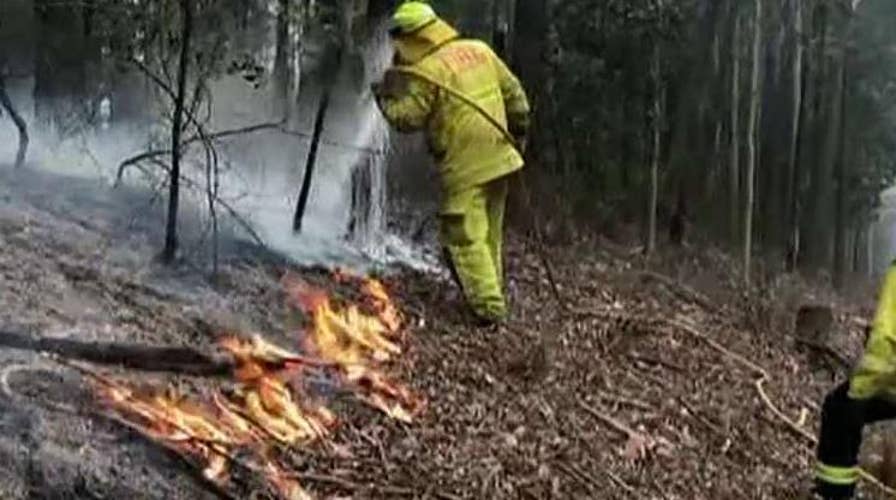Australian wildfire death toll grows as military deployed to ravaged communities cut off by flames
Military ships and aircraft have been deployed to coastal communities in Australia; Jeff Paul reports.
The wildfires that are ravaging parts of Australia are burning through vegetation under such extreme conditions the blazes are generating enough heat to create their own weather systems, including fire-generated thunderstorms and fire tornadoes.
Thousands of firefighters continue to fight the blazes that have burned millions of acres in New South Wales, Victoria and South Australia, an area twice the size of Maryland. In New South Wales, the rural fire service (RFS) said as of Sunday there were 150 fires active in the state, 64 of them uncontrolled.
"It's not something we have experienced before," New South Wales Premier Gladys Berejiklian said.
SYDNEY SUBURB BECOMES HOTTEST PLACE ON EARTH AS TEMPS REACH 120 DEGREES
On Saturday, the RFS warned that several fires along the coast had spawned fire-generated thunderstorms. One such storm was reported around 178 miles south of Syndey.
"A fire-generated thunderstorm has formed over the Mines, Pilot Lookout and Nine Mile fires, southwest of Thredbo and Ingebirah and west of Corrowong and Delegate. This is a very dangerous situation," the agency said on Twitter. "Monitor the conditions around you and take appropriate action."
The weather conditions that were reported Saturday in Australia are what is known as a pyrocumulonimbus clouds. According to the National Weather Service, a pyrocumulus cloud forms if there is enough moisture and atmospheric instability over the "intense heat source."
"Although not common, these clouds can grow large enough to produce lightning and possibly some light precipitation," the NWS notes.

A pyrocumulonimbus cloud can be seen Saturday after forming over the Doubtful Gap Trail in the Snowy Monaro area of Australia. (NSW Rural Fire Service)
The explosive storms can form during a fire when heat and moisture from the plants are released, even when the fuel is relatively dry. Mike Flannigan, a fire scientist at the University of Alberta in Canada, told the Associated Press that warm air is less dense than cold air so it rises, releasing the moisture and forming a cloud that lifts and ends up a thunderstorm started by fire.
“These can be deadly, dangerous, erratic and unpredictable,” Flannigan told the AP.
The storms can inject particles as high as 10 miles into the air and generate dry lightning. The rising air also can cause intense updrafts that suck in air at a rate to cause strong winds to develop.
Sometimes those winds can create what's known as a "fire tornado," when winds created by an intense fire whirl and twist tightly. The hotter the fire, the faster the air rises and the tighter it twists until it takes off as a tornado. A fire tornado with the power of an EF-3 tornado was reported in the Carr Fire in California in 2018.
Last week, an RFS firefighter was killed when a fire tornado caused by a pyrocumulonimbus cloud formation collapsing caused his fire truck to roll over, according to Reuters.
“That extraordinary event resulted in cyclonic-type base flipping over a 10-ton truck. That is the volatility and danger that exists,” NSW RFS commissioner Shane Fitzsimmons told reporters last week on how dangerous fire-induced weather patterns can be.
AUSTRALIA WILDFIRES PROMPT NAVY BEACH RESCUES, MARKING LARGEST PEACETIME EVACUATIONS IN HISTORY
On Saturday Australian Prime Minister Scott Morrison announced that, for the first time in Australian history, 3,000 army, navy and air force reservists will be thrown into the battle against the fires. He also committed $14 million to leasing fire-fighting aircraft from overseas.
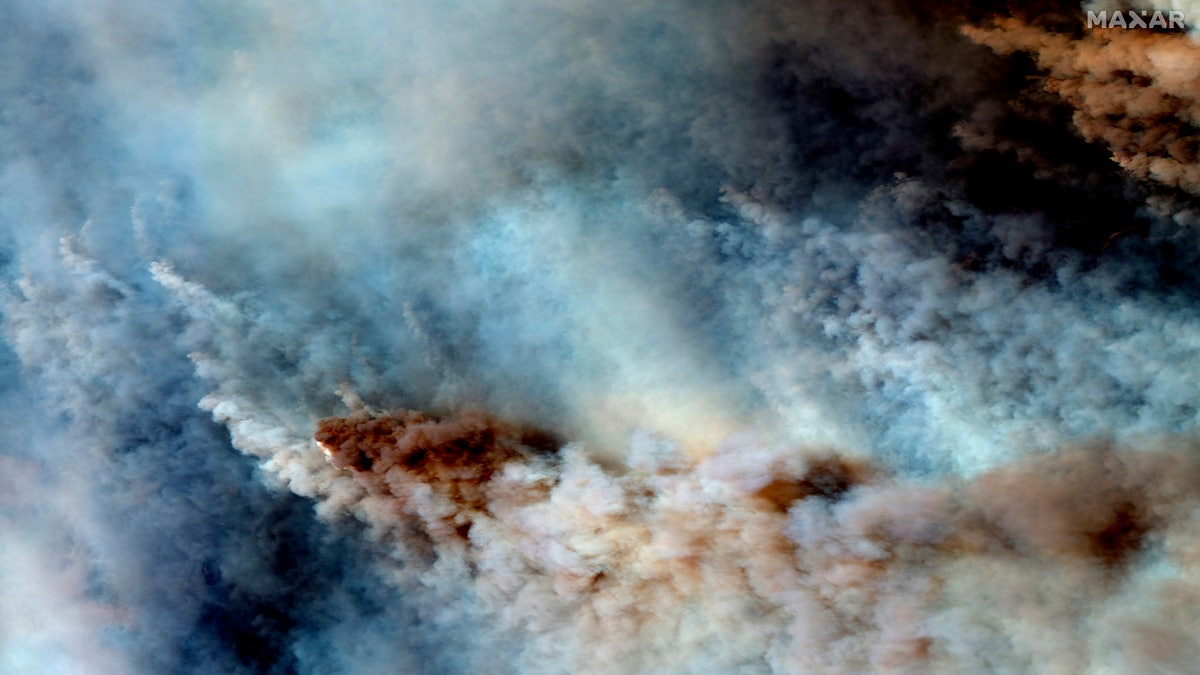
This Saturday, Jan. 4, 2019 image provided by provided by Maxar Technologies shows wildfires east of Orbost , Australia. (Maxar Technologies via AP))
Morrison has faced widespread criticism for taking a family vacation in Hawaii at the start of the wildfire crisis and was heckled last week when he visited a township in New South Wales in which houses had been destroyed and which was home to one of three volunteer firefighters who have died in the crisis so far.
Morrison told a news conference Sunday it was not the time for blame.
"There has been a lot of blame being thrown around," Morrison said. "And now is the time to focus on the response that is being made. ... Blame doesn't help anybody at this time and over-analysis of these things is not a productive exercise."
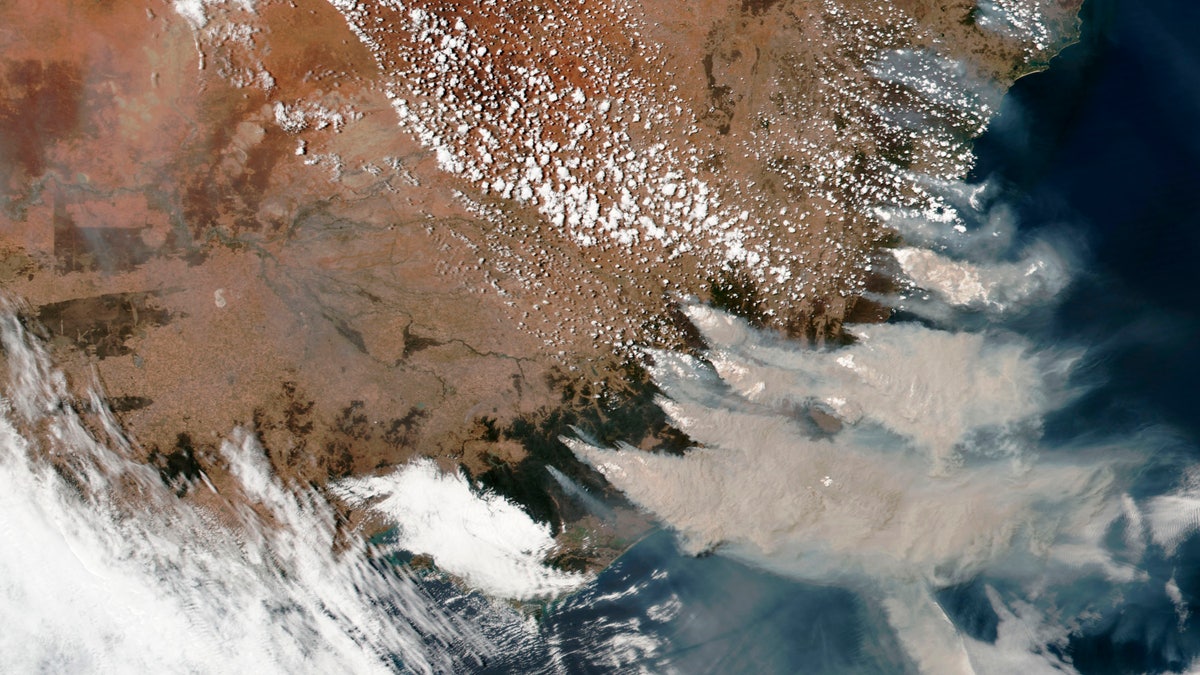
This satellite image provided by NASA on Saturday, Jan. 4, 2020 shows wildfires in Victoria and New South Wales, Australia. (NASA via AP)
Morrison, who has been chided for past remarks that appear to minimize the link between climate change and Australia's escalating threats of drought and wildfires, sought to "correct the record" on Sunday.
"I have seen a number of people suggest that somehow the government does not make this connection," he told reporters. The government has always made this connection and that has never been in dispute.”
CLICK HERE FOR THE FOX NEWS APP
Australia's capital, Canberra, was enveloped in a smoky haze Sunday and air quality at midday was measured at 10 times the usual hazardous limit. The fires have killed at least 24 people in Australia and destroyed almost 2,000 homes.
The early and devastating start to Australia’s summer wildfires has also been catastrophic for the country's wildlife, likely killing nearly 500 million birds, reptiles and mammals in New South Wales alone, Sydney University ecologist Chris Dickman told the Sydney Morning Herald. Frogs, bats and insects are excluded from his estimate, making the toll on animals much greater.
The smoke is also having impacts over 1,200 miles away from the flames.
In New Zealand the skies above Auckland on Sunday were tinged orange by smoke from the bushfires and police were inundated with calls from anxious residents.
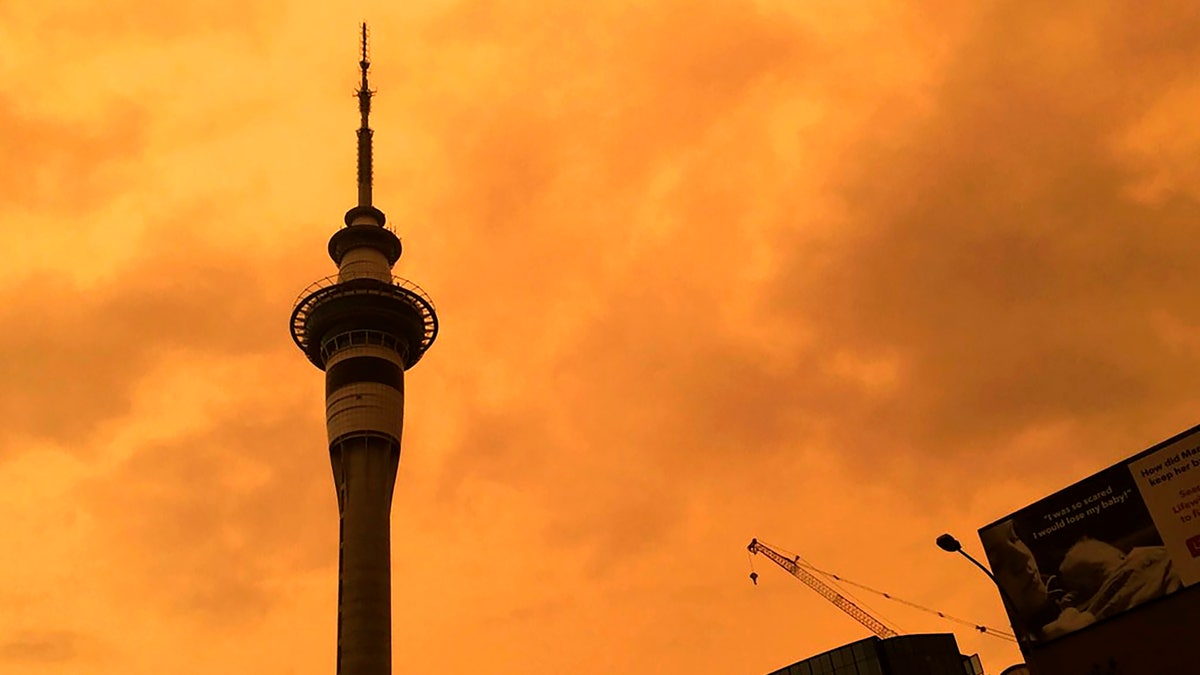
The sky above Auckland's Sky Tower turns orange as smoke from the Australia wildfires arrives in New Zealand, Sunday, Jan. 5, 2020. (Luke Kirkness/New Zealand Herald via AP)
The spectacle caused such a commotion that authorities asked people to stop calling the emergency number to report the issue, Sky News reported.
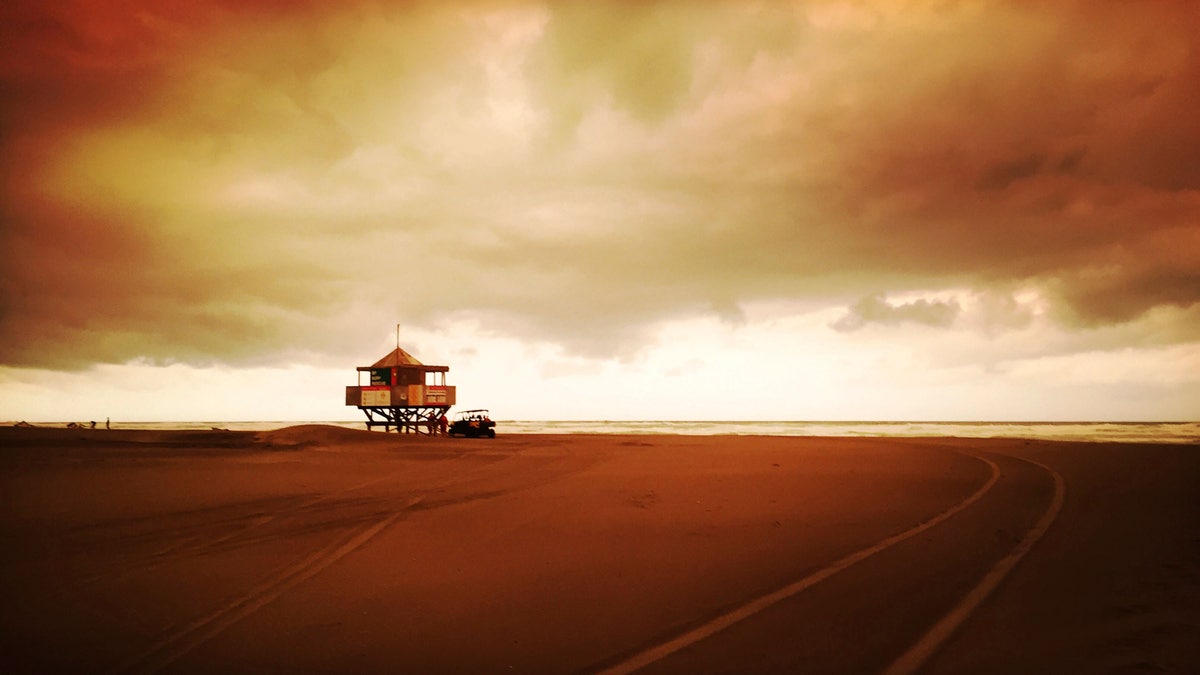
The sky above Bethells Beach on the west coast near Auckland turns orange as smoke from the Australia wildfires arrives in New Zealand, Sunday, Jan. 5, 2020. (Michael Craig/New Zealand Herald via AP)
"We're in Auckland, New Zealand. That's why this is so shocking to us -- we're so far away yet this smoke is so intense," resident Zimena Dormer-Didovich said Sunday. "My 14-year-old's asthma is playing up, and I'm starting to notice that my breathing is slightly affected, too."
The Associated Press contributed to this report.




















